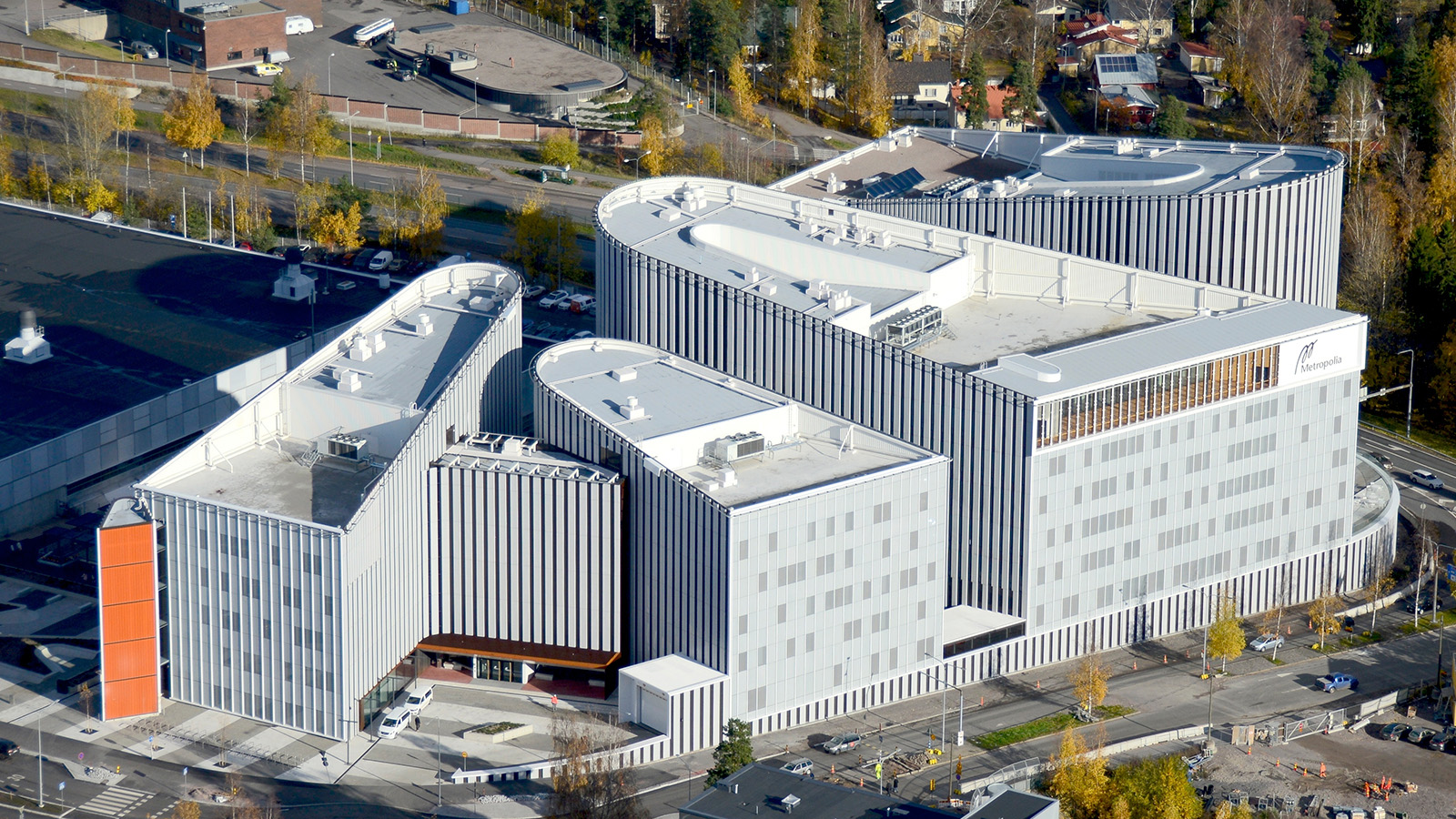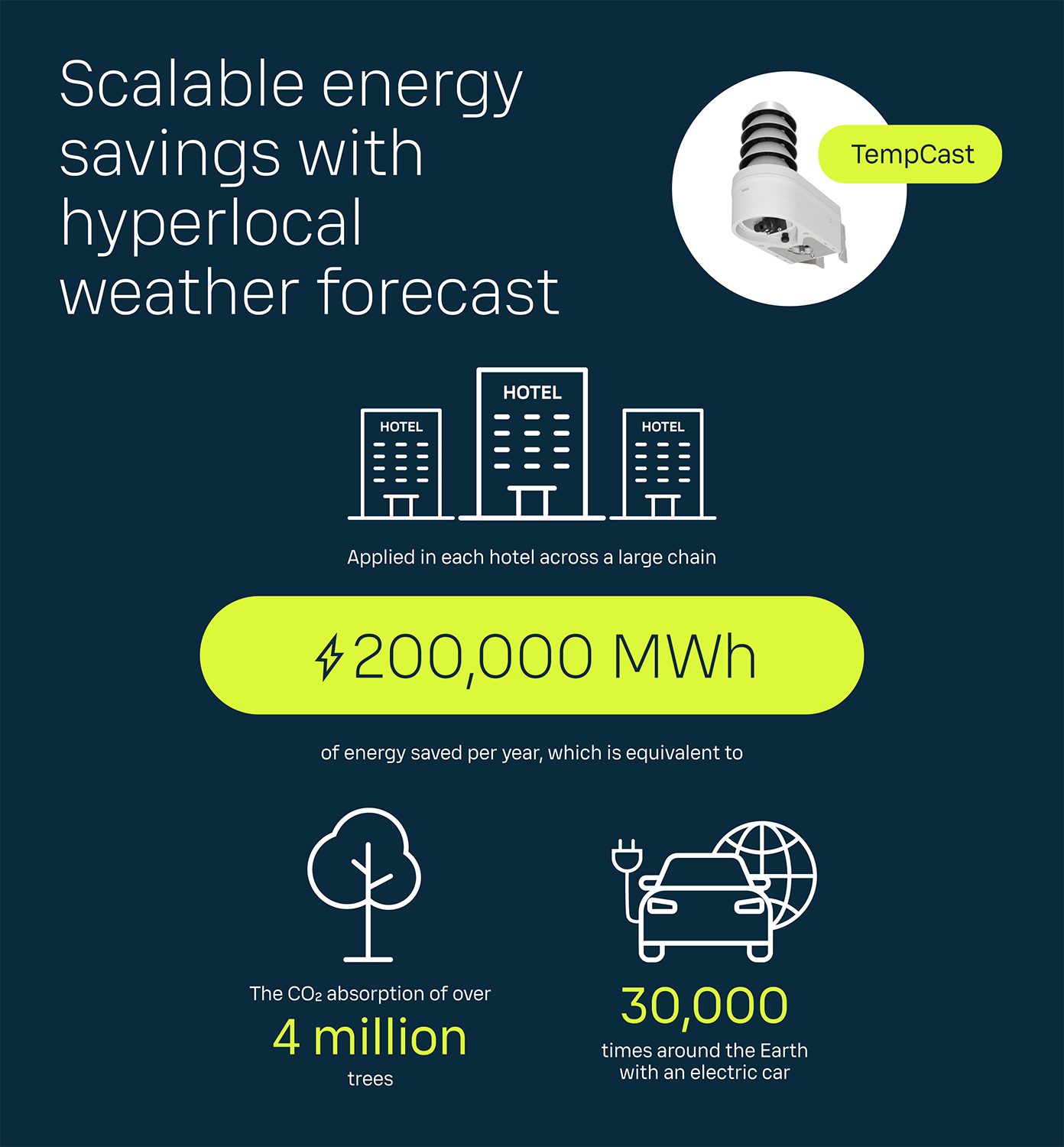Promising energy savings with hyperlocal weather forecast
30 percent of the used energy is consumed by buildings, largely for heating and cooling. The initial results of our experiment with a hyperlocal weather station aimed at energy savings in buildings are now available.

Do you remember our experiment with the hyperlocal weather station? Vaisala Xweather’s TempCast sensor has been “training” itself on the rooftop of Metropolia’s Myllypuro campus since October 2023. In the initial phase of the experiment, the sensor collected local weather data, which is used to create a more accurate building-specific weather forecast. This forecast has been utilized in the building’s district-heating-powered radiators since February 2024.
Recent results demonstrate the significant potential of hyperlocal weather forecasts for saving energy in buildings. Compared to a competing weather model, Vaisala Xweather’s new and innovative technology has saved 2.8% of energy (7.64 MWh) in just two and a half months. The optimized radiators now cover approximately a quarter of the building’s heating needs. In the second phase of the experiment, precise local weather forecast data also guides the AC and floor heating, so further improvements are expected in the upcoming results this autumn.

The tested solution is scalable. The lessons from the experiment could thus be utilized more broadly, for example, in buildings managed by the City of Helsinki, totaling 2000.
Collaborating toward saving energy
In addition to Vaisala Xweather, the experiment involves Eeneman Oy, Bravida, Platform of Trust, and Metropolia University of Applied Sciences. Metropolia’s Head of Technology, Harri Hahkala, is excited about the experiment.
– So far in this project, all stakeholders involved have done a great job testing, learning, and optimizing the data. But in September, during the project’s second phase, we will explore the full potential of this technology. The results are already promising, and I look forward to finding new ways to apply the findings on a larger scale, helping organizations maximize their energy savings and understand weather’s hyperlocal impact better, says Hahkala.
